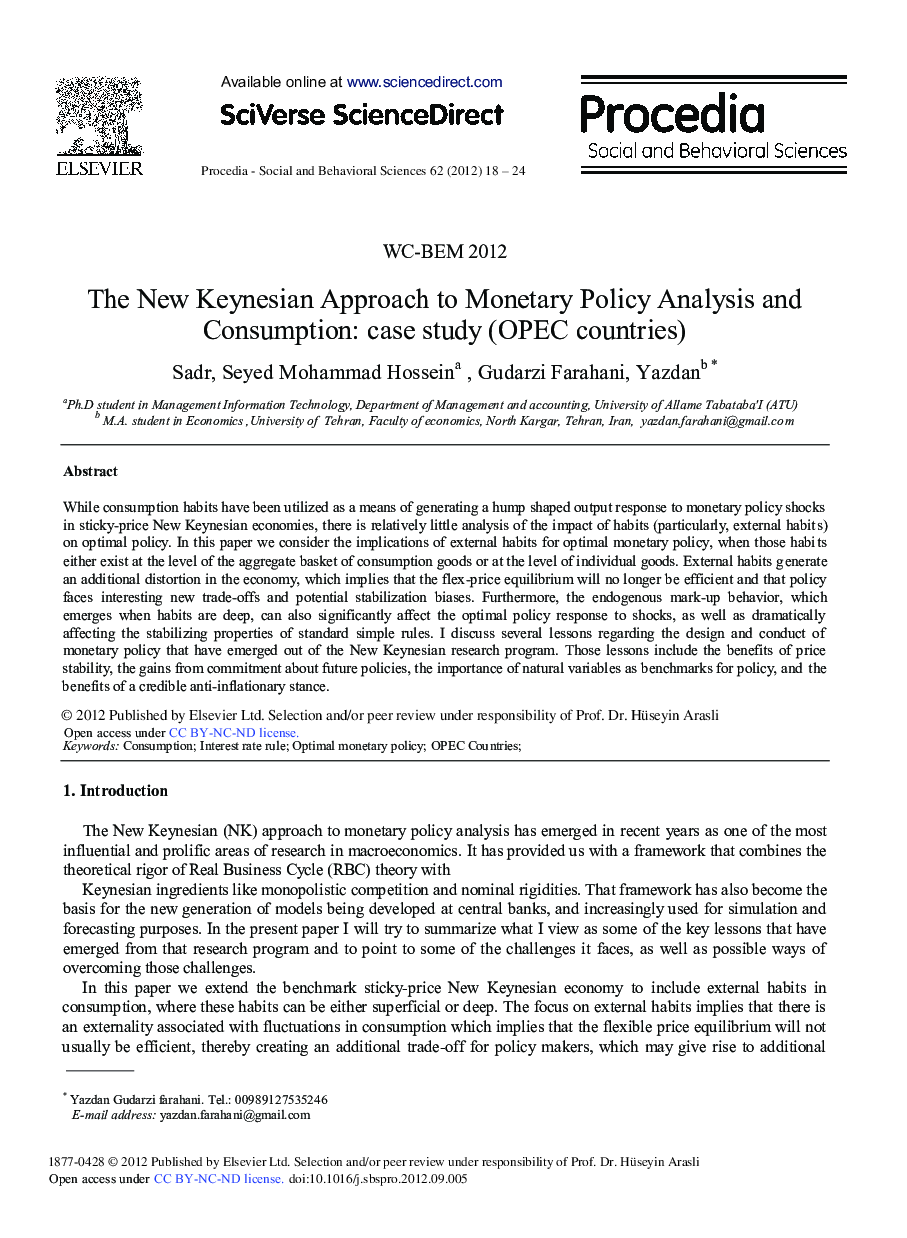| کد مقاله | کد نشریه | سال انتشار | مقاله انگلیسی | نسخه تمام متن |
|---|---|---|---|---|
| 1120308 | 1488497 | 2012 | 7 صفحه PDF | دانلود رایگان |

While consumption habits have been utilized as a means of generating a hump shaped output response to monetary policy shocks in sticky-price New Keynesian economies, there is relatively little analysis of the impact of habits (particularly, external habit s) on optimal policy. In this paper we consider the implications of external habits for optimal monetary policy, when those habi ts either exist at the level of the aggregate basket of consumption goods or at the level of individual goods. External habits g enerate an additional distortion in the economy, which implies that the flex-price equilibrium will no longer be efficient and that policy faces interesting new trade-offs and potential stabilization biases. Furthermore, the endogenous mark-up behavior, which emerges when habits are deep, can also significantly affect the optimal policy response to shocks, as well as dramatically affecting the stabilizing properties of standard simple rules. I discuss several lessons regarding the design and conduct of monetary policy that have emerged out of the New Keynesian research program. Those lessons include the benefits of price stability, the gains from commitment about future policies, the importance of natural variables as benchmarks for policy, and the benefits of a credible anti-inflationary stance.
Journal: Procedia - Social and Behavioral Sciences - Volume 62, 24 October 2012, Pages 18-24